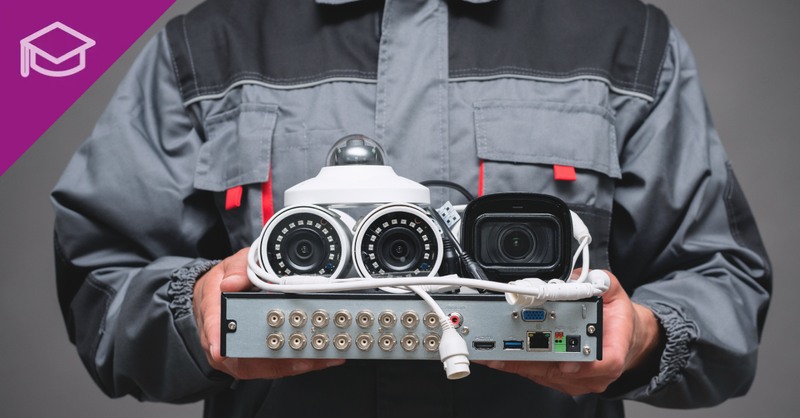
DVR vs. NVR
Video surveillance has many applications in the home, office, industry and public venues. At the core of all video surveillance system is a central video controller that collects video streams from each camera and makes this available for live view or storage for later viewing. There are two main technologies that enable this to happen, a Digital Video Recorder (DVR), or Network Video Recorder (NVR). The main difference between the two systems is that a DVR connects to analogue cameras, while an NVR connects to digital IP cameras.
A DVR connects to analogue cameras using dedicated cables (normally coax cables). The DVR converts the analogue video signals to digital video using codecs, it then stores the digital video as a files on a local storage drive (similar to those found in personal computers).
An NVR, on the other hand, connects to digital IP cameras over a data network, using standard network cabling, such as Ethernet (Cat5e/6) or wireless (WiFi). The NVR receives digital video streams from the IP cameras, it will make the video feed from each camera available for live viewing, and store the digital video file on local storage drive (or optional network storage).
Analogue and digital cameras offer comparable video quality, IP Cameras offer slightly higher image resolution, however you need to keep in mind that for both systems choosing a higher resolution means additional demands on storage capacity and network bandwidth. For example, a 5M camera will produce a file that is more than twice the size of a 2M camera over the same time duration. Hence it is important to choose the right camera resolution that will satisfy your application requirements.
Most DVR's and all NVR's offer secured remote user access over data network, or the Internet, allowing you to view video footage remotely using a Web Browser, Computer software, or a smart phone APP.
The table below will help you understand the not so obvious factors to consider when deciding on which technology to choose:
DVR | NVR | |
Cabling | Requires special Coax and power cable for connecting the cameras to the DVR. | Use standard network cabling (Cat5e/6). Use PoE for convenient power connection over the same cable. Also support wireless network (WiFi). |
Data Network | No load on data network, other than remote access. | Camera IP traffic puts capacity demands on the data network. The load is proportional to the camera resolution, and the number of cameras on your network. |
Location | Once installed it is fixed in the same location. | Can be located anywhere where there is data network cable or wireless network (WiFi) coverage. |
In general, NVR systems offer a high degree of flexibility, but as they share the same network with other devices on your network, the NVR video quality may be susceptible to common network degradation factors such as interference or congestion. Before installing an NVR system on your network ensure there is sufficient network bandwidth available to carry the additional NVR IP camera traffic. You may also want to consider installing a separate dedicated data network for your NVR surveillance system.
DVR systems on the other hand offer higher operational reliability, as they operate in isolation from other networks. Once the cabling and power supply to each camera is sorted out, and in place, the DVR system can be easily configured, offering reliable video surveillance with remote user access, if required.
LEARN MORE ABOUT NVR ▶
